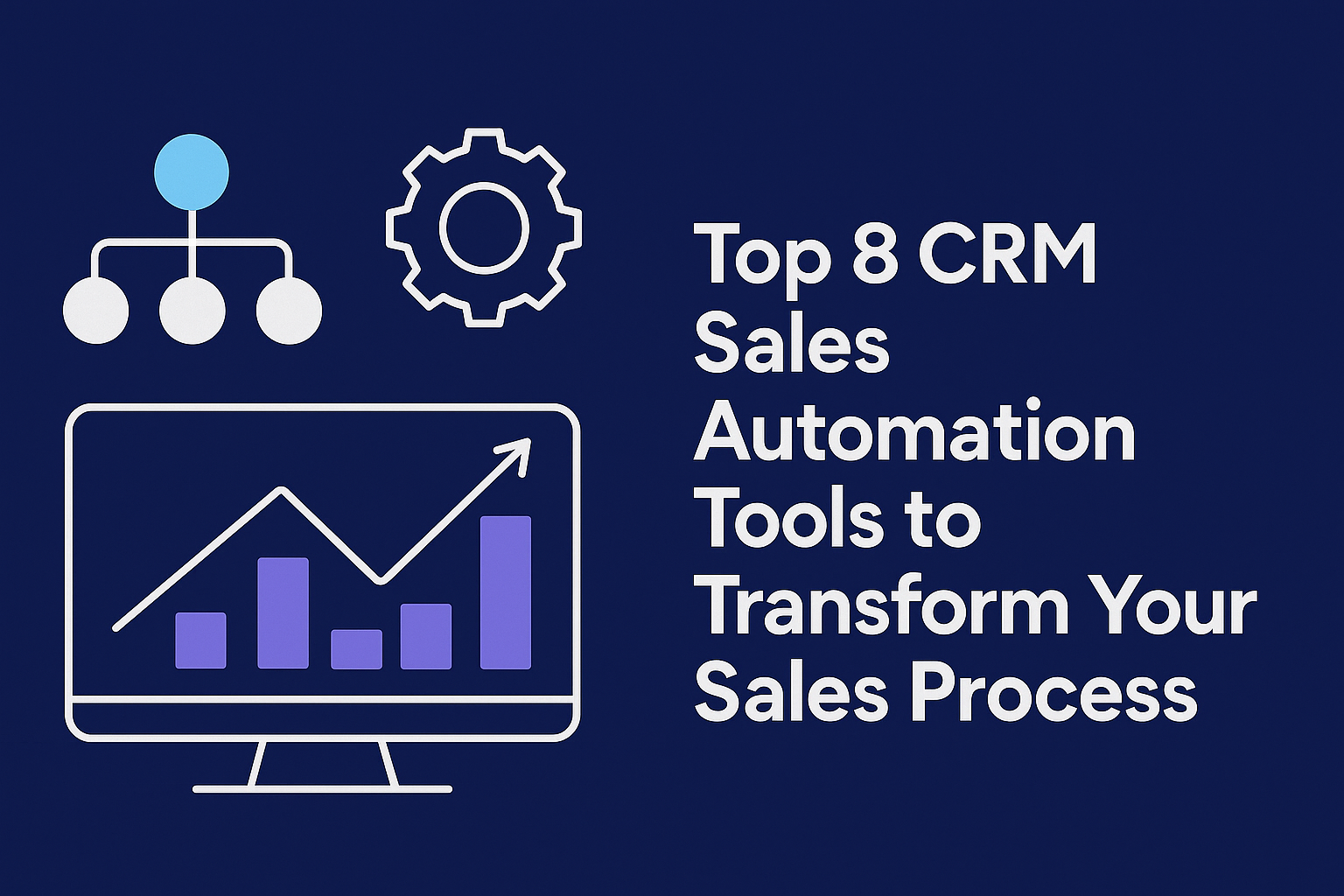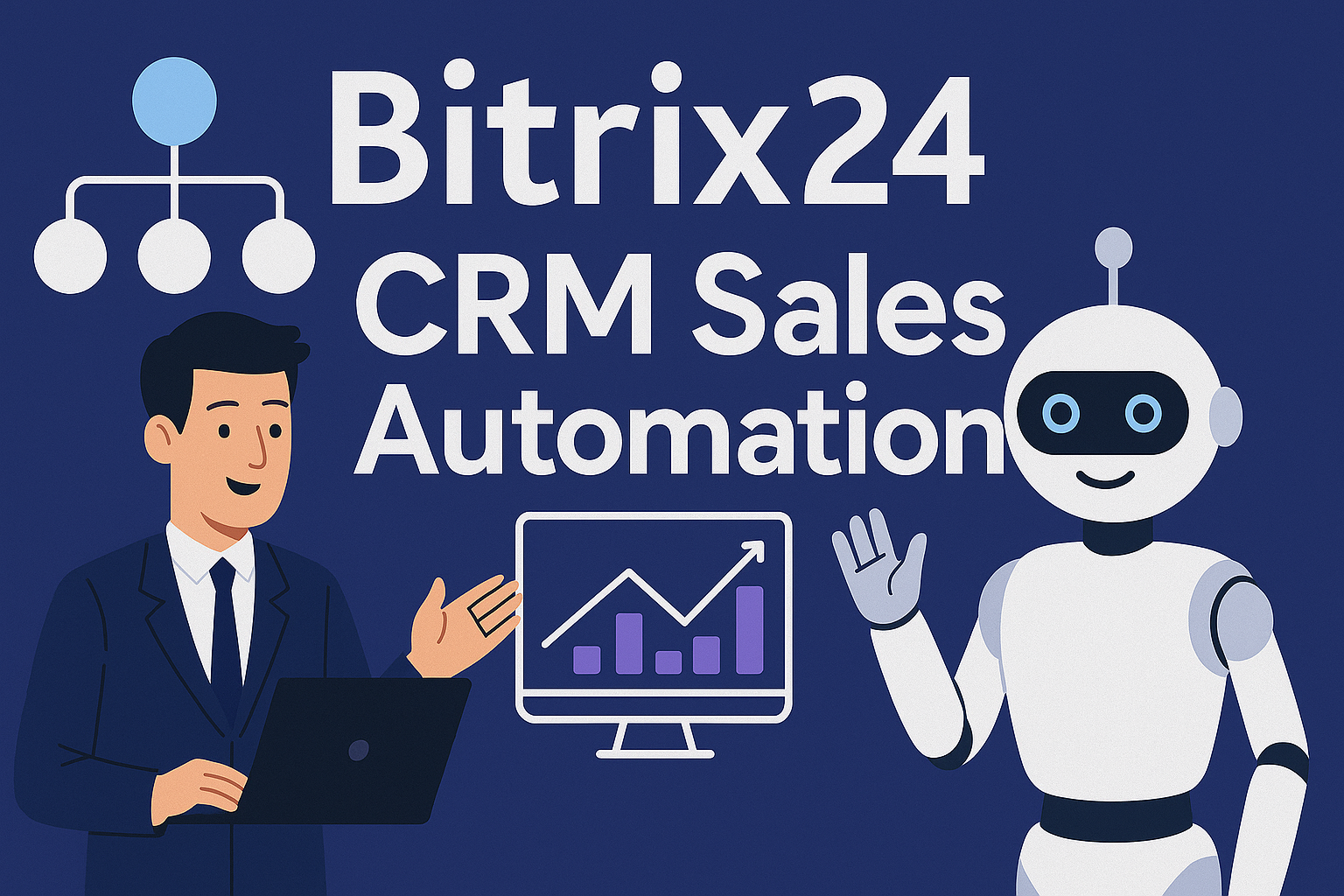
Sales automation is the solution that helps businesses optimize workflows, reduce errors, and increase sales efficiency by automating routine activities.

What Is Sales Automation?
Sales automation uses technology – typically CRM platforms combined with automation tools – to handle repetitive sales tasks automatically. This includes activities such as sending follow-up emails, scheduling meetings, lead scoring, and updating sales pipelines.
By automating these tasks, sales teams can focus more on building relationships and closing deals, rather than administrative work.
Key Benefits of Sales Automation
- Saves Time: Automates repetitive tasks so reps can focus on selling.
- Increases Productivity: Streamlines workflows and reduces manual errors.
- Improves Lead Management: Scores and prioritizes leads automatically.
- Enhances Customer Experience: Ensures timely and consistent communication.
- Provides Better Insights: Tracks activities and results for data-driven decisions.
How Sales Automation Works
Sales automation tools typically integrate with a CRM system to centralize customer data and sales activities. Automation rules and triggers then perform predefined actions, such as:
- Sending a personalized follow-up email after a demo.
- Notifying sales reps when a lead opens an email or visits a pricing page.
- Updating deal stages automatically based on activity.
- Assigning leads to reps based on territory or availability.
By doing this, sales automation ensures no lead is neglected and that every sales opportunity is nurtured efficiently.
Common Sales Automation Tasks
- Email outreach and follow-up sequences
- Meeting scheduling and calendar management
- Lead scoring and qualification
- Pipeline and deal stage updates
- Document sharing and contract management
- Sales reporting and forecasting
Top CRM Tools with Sales Automation Features
Choosing the right platform is essential for maximizing sales automation benefits. Popular tools include:
- Bitrix24: Bitrix24 combines powerful crm and sales automation capabilities into a single unified platform. It offers comprehensive lead and contact management, deal pipelines, task automation, and real-time analytics — all designed to optimize every stage of your sales cycle. Bitrix24 automates repetitive sales tasks like follow-up reminders, lead assignment, and email sequences, freeing your team to prioritize high-value activities. Additionally, its built-in collaboration tools and mobile app make it ideal for teams that need flexibility and seamless communication. For businesses looking for an affordable yet scalable solution, Bitrix24 stands out as a top choice in crm and sales automation.

- HubSpot Sales Hub: HubSpot Sales Hub is renowned for its intuitive interface and robust automation features. It enables sales teams to automate email sequences, track engagement, and manage pipelines effortlessly. HubSpot’s seamless integration with marketing and customer service modules makes it perfect for businesses wanting an all-around growth platform.
- Salesforce Sales Cloud: Salesforce Sales Cloud is a market leader for large enterprises seeking advanced sales automation. It offers AI-powered insights with Einstein Analytics, automated lead scoring, and task management. Its extensive customization options and ecosystem integrations help companies tailor automation to complex sales processes.
- Pipedrive: Pipedrive excels with its easy-to-use visual sales pipeline and automation of routine tasks such as follow-ups and status updates. Its simple interface and powerful integrations with tools like Gmail and Slack make it a favorite for small to medium-sized sales teams.
- Zoho CRM: Zoho CRM offers versatile automation including workflow rules, macros, and AI-powered sales predictions. With support for multi-channel communication, Zoho helps automate lead nurturing and customer engagement, providing a flexible platform for diverse business needs.
- Freshsales: Freshsales provides integrated phone, email, and sales activity automation. It incorporates AI-based lead scoring and workflow automation, enabling SMBs to automate routine sales tasks while maintaining a personalized touch with prospects.
- Copper CRM: Copper CRM is designed for Google Workspace users, automating sales activities directly within Gmail, Calendar, and Drive. Its automation reduces manual data entry, manages pipelines, and reminds reps about follow-ups, enhancing productivity for teams embedded in Google’s ecosystem.
- SalesLoft: SalesLoft is a sales engagement platform focused on automating multi-channel communication workflows such as cadences, call logging, and email sequencing. Integrated with major CRMs, it empowers sales reps to engage prospects consistently and track every interaction efficiently.
Real-World Applications of Sales Automation
Sales automation isn’t just a buzzword – it’s a practical solution that’s already reshaping workflows across industries. From startups to enterprises, automation is being used to streamline daily activities and free up valuable human resources.
1. Lead Management
One of the most impactful areas where automation thrives is lead generation and nurturing. Sales automation tools automatically capture leads from web forms, email inquiries, chatbots, and social media platforms. Once in the system, the leads are segmented and scored based on behavior, demographics, or engagement.
For example, if a lead downloads a whitepaper and opens three emails, the system can assign a high engagement score and move that contact to the next stage of the funnel – all without manual intervention.
2. Follow-up Workflows
The majority of deals are lost due to poor follow-up. Automation ensures that leads and prospects don’t fall through the cracks. Sales reps can set up predefined sequences for follow-ups that include personalized emails, scheduled calls, or LinkedIn messages triggered over time.
This not only saves hours of manual task setting but also ensures consistent communication, which is essential for building trust with prospects.
3. Task Assignments and Deal Routing
In fast-paced sales environments, it’s critical that leads and deals are assigned to the right people at the right time. With automation, new opportunities can be automatically routed to sales reps based on criteria like geography, workload, or industry vertical. Tasks like sending quotes, scheduling demos, or following up after a call can also be auto-generated – ensuring that nothing gets missed and your team stays aligned.
How to Successfully Implement Sales Automation
Introducing automation into your sales process is not just about adopting new software – it requires strategy, structure, and change management. Below are best practices to help you succeed:
1. Document Your Existing Sales Process
Before automating anything, you need to clearly understand how your sales process currently works. Map out each stage, from lead capture to closing, and identify which tasks are repetitive or manual.
2. Start with High-Impact Automations
Not all tasks need to be automated at once. Begin with low-hanging fruit – like email follow-ups, meeting scheduling, and pipeline updates. These are easy to implement and generate quick wins, increasing buy-in from your team.
3. Customize Based on Your Funnel
Every business is different. Your automation should reflect the nuances of your customer journey. Whether you use a consultative approach or a high-volume sales model, tailor your automation rules to support those dynamics.
4. Integrate with Your CRM and Other Tools
Sales automation is most effective when it’s connected to the rest of your tech stack – especially your CRM, marketing tools, and communication platforms. For example, integrating with email marketing platforms enables you to launch behavior-triggered campaigns, while syncing with calendars ensures seamless appointment scheduling.
5. Continuously Monitor and Optimize
Automation is not “set it and forget it.” Use data to evaluate the performance of your workflows. Are your emails getting opened? Are leads progressing through the pipeline? Identify bottlenecks and update your automation rules accordingly.
Common Mistakes to Avoid
While sales automation offers significant benefits, it’s easy to misstep during implementation. Here are the most common pitfalls:
1. Over-Automation
Automating too many processes can make your customer experience feel robotic and impersonal. Always strike a balance. Use automation to support – not replace – human interaction.
2. Ignoring Data Hygiene
Automation depends on clean, structured data. If your CRM is cluttered with duplicates, outdated info, or incomplete fields, your automated processes will suffer. Regularly audit and maintain your database.
3. Poor Onboarding and Training
No matter how powerful your tools are, they’re ineffective if your team doesn’t understand how to use them. Invest in onboarding and provide clear documentation for using and modifying automation flows.
The ROI of Sales Automation
The return on investment from implementing sales automation can be substantial. Here’s how it translates to measurable gains:
1. Higher Conversion Rates
Timely and consistent follow-ups, personalized communication, and faster response times all contribute to a smoother customer experience and increased conversions.
2. Increased Productivity
By eliminating manual work like logging data, assigning tasks, or creating reminders, sales reps have more time to spend on what really matters: selling.
3. Shorter Sales Cycles
With tasks happening in real time and deals automatically progressing through stages, businesses can move prospects through the funnel more quickly.
4. Improved Forecasting and Reporting
Automation ensures that your CRM is always up to date, providing more accurate data for forecasting, performance analysis, and strategic decision-making.
How to Get Started with Sales Automation
- Map Your Sales Process: Understand which tasks are repetitive and suitable for automation.
- Choose the Right Tools: Select CRM and automation tools that fit your team’s size and workflow.
- Define Automation Rules: Set up triggers and actions that reflect your sales methodology.
- Train Your Team: Ensure everyone understands the new processes and tools.
- Measure and Optimize: Use analytics to track performance and refine automation rules.
Conclusion
Sales automation is not about removing humans from the sales process – it’s about empowering your sales team to operate at maximum efficiency. By automating repetitive tasks and systematizing follow-ups, businesses can dramatically improve response times, lead nurturing, and overall sales performance.
In an increasingly competitive market, those who adopt sales automation strategically will be better positioned to grow, scale, and adapt. Whether you’re just getting started or looking to refine your existing workflows, automation is a long-term investment in your sales success.





